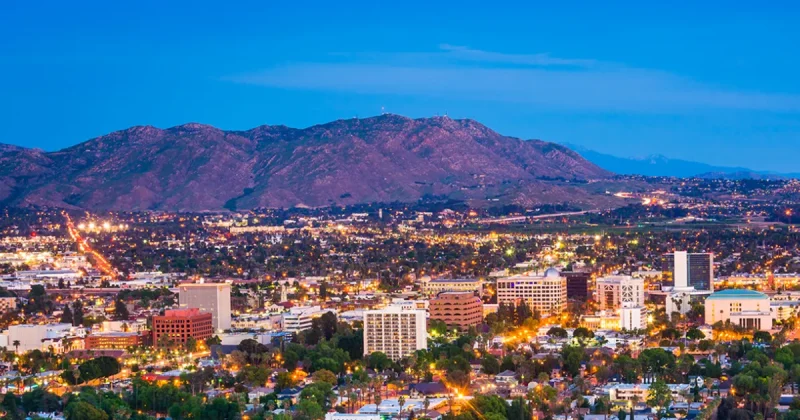The 30 Best Places to Live in Minnesota: The State’s Top Communities

Minnesota offers residents a unique combination of vibrant urban centers, charming suburban communities, and access to abundant natural resources that make it an attractive place to call home.
The state’s diverse cities and towns provide options for families, young professionals, and retirees seeking different lifestyles and amenities.
Understanding which Minnesota communities offer the best quality of life requires examining factors like school systems, employment opportunities, recreational facilities, and overall livability scores.
From the bustling Twin Cities metro area to smaller communities with strong local character, Minnesota’s top-rated places to live span major metropolitan areas like Minneapolis and St. Paul to growing suburbs and historic river towns that each bring distinct advantages to residents.
Here are the 30 best places to live in Minnesota:
30. Albert Lea
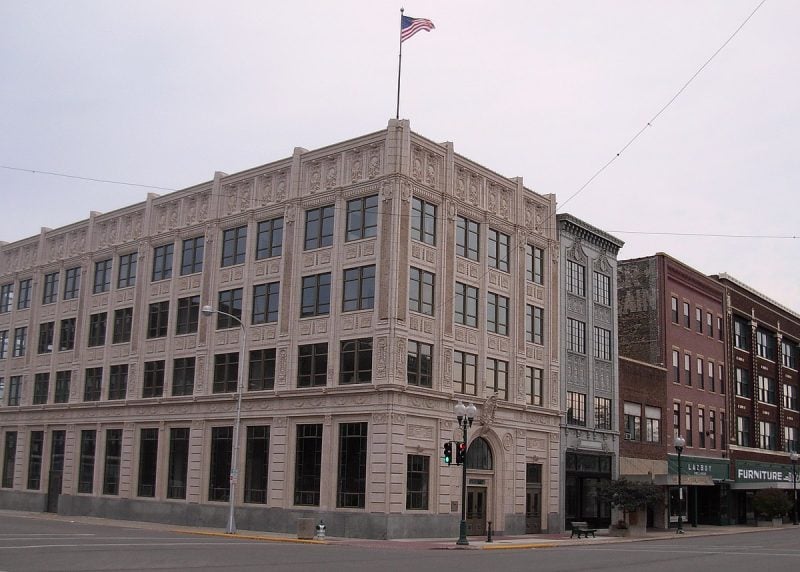
Albert Lea ranks as the fourth best place to live in Minnesota according to recent rankings. This southern Minnesota city has a population of 18,379 residents in Freeborn County.
The city offers a dense suburban feel where most residents own their homes. Albert Lea features numerous parks and outdoor recreational opportunities throughout the area.
Home prices in Albert Lea are significantly lower than Minnesota’s state average of $269,934. The cost of living index sits at 90, which is 10 points below the national average.
Albert Lea serves as a regional hub for commerce and healthcare services. The city maintains a vibrant arts scene and strong community connections.
Many retirees choose to live in Albert Lea due to its affordability and safety ratings. The city has earned an overall livability score of 67 out of 100 from BestPlaces.
29. Hastings
Hastings is a small city located in southeastern Minnesota with a population of 22,050. The city sits in Dakota County and offers residents a dense suburban atmosphere.
Most residents in Hastings own their homes rather than rent. The community attracts many families and young professionals who appreciate the stable residential environment.
Home prices in Hastings exceed Minnesota’s state average of $269,934. This reflects the desirability of the area among potential homebuyers.
The city provides numerous parks and outdoor recreation opportunities for residents. Hastings maintains a historic downtown area that adds character to the community.
Public schools in Hastings receive high ratings, making it attractive for families with children. The city maintains a strong sense of community spirit among its residents.
Hastings residents tend to lean conservative politically. The combination of good schools, parks, and community atmosphere contributes to its appeal as a place to live.
28. Lake Minnetonka
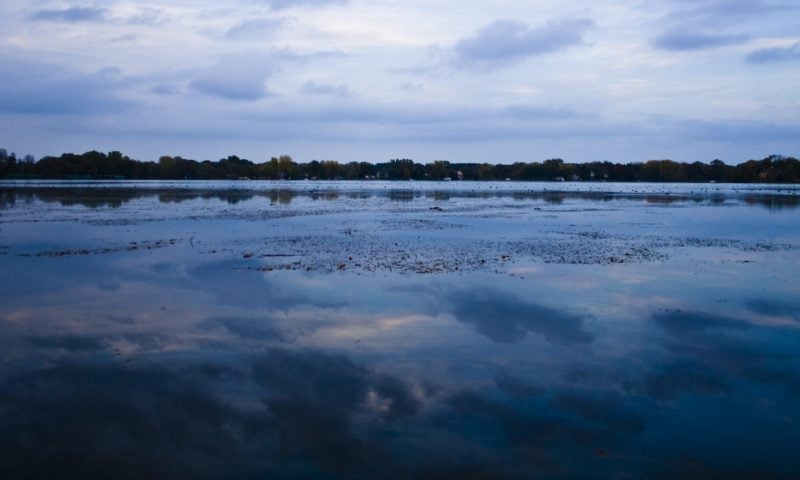
Lake Minnetonka stands as one of Minnesota’s most desirable lakefront communities. The area combines scenic beauty with quiet lakeshores and dynamic neighborhoods.
Deephaven offers some of the best lakeside living around Lake Minnetonka. This small town provides breathtaking views and maintains a friendly community atmosphere with regular local events.
The lake attracts residents seeking luxury homes and waterfront properties. Many prestigious houses line the shores, creating an upscale residential environment.
Lake Minnetonka’s crystal-clear waters provide excellent swimming and recreational opportunities. The lake spans multiple communities, offering various housing options and price points.
Residents enjoy easy access to the Twin Cities while living in a more peaceful lakefront setting. The area maintains strong property values due to its desirable location and natural amenities.
27. Waite Park
Waite Park is a small city located in Stearns County near St. Cloud with approximately 6,800 residents. The community offers residents access to local businesses, restaurants, and entertainment options within a compact setting.
The city ranks 65th out of 479 for best places to buy a house in Minnesota. Home prices in Waite Park are below the state average of $269,934, making it an affordable housing option.
Safety is a notable strength of Waite Park. The city maintains low crime rates per capita, creating a secure environment for families and residents.
Waite Park provides a sparse suburban atmosphere where most residents own their homes. The area features numerous restaurants and parks for recreation and dining.
The city’s proximity to St. Cloud gives residents access to larger city amenities while maintaining a small-town feel. This combination attracts those seeking affordable living in a safe community.
26. Stillwater
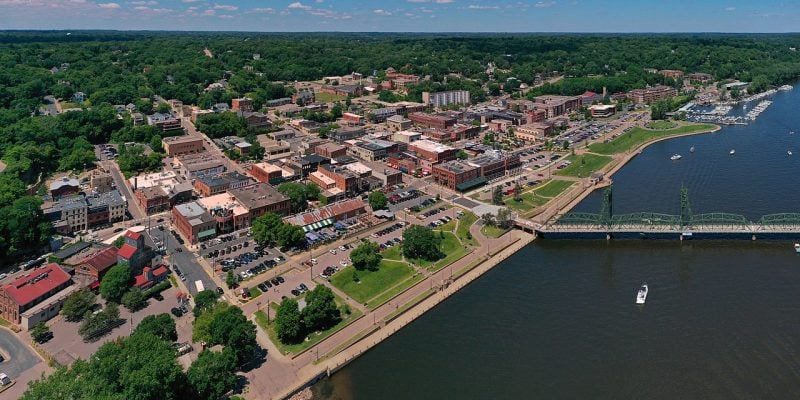
Stillwater sits along the St. Croix River in Washington County with a population of 19,323. The city holds the nickname “The Birthplace of Minnesota” and maintains its historic charm.
Residents enjoy a dense suburban atmosphere where most people own their homes. The median household income reaches $91,947, significantly higher than the national average.
The poverty rate stands at 5.2%, well below national levels. This economic stability contributes to the community’s overall quality of life.
Stillwater ranks as the 23rd-best suburb in Minnesota according to recent studies. The city earned a livability score of 83 out of 100, placing it 15th statewide.
The area offers numerous restaurants and parks for residents. Its location provides easy access to Minneapolis-Saint Paul metropolitan amenities while maintaining a quieter suburban environment.
Families and young professionals find Stillwater particularly appealing for its combination of economic opportunity and residential comfort.
25. Prior Lake
Prior Lake is a suburb of Minneapolis with a population of 27,832 located in Scott County. The city offers residents a sparse suburban feel with most homeowners rather than renters.
The community features beautiful natural scenery centered around Prior Lake itself. Numerous parks and trails provide ample opportunities for outdoor recreation and activities.
Prior Lake maintains a vibrant atmosphere with cultural attractions throughout the city. The area offers excellent shopping options and highly rated schools for families.
Home prices in Prior Lake exceed Minnesota’s state average of $269,934. The higher cost reflects the desirability of the area and quality of life residents enjoy.
The city provides easy access to Minneapolis while maintaining its own distinct community character. Parks are abundant throughout Prior Lake, contributing to its appeal for those seeking outdoor amenities.
24. Shakopee
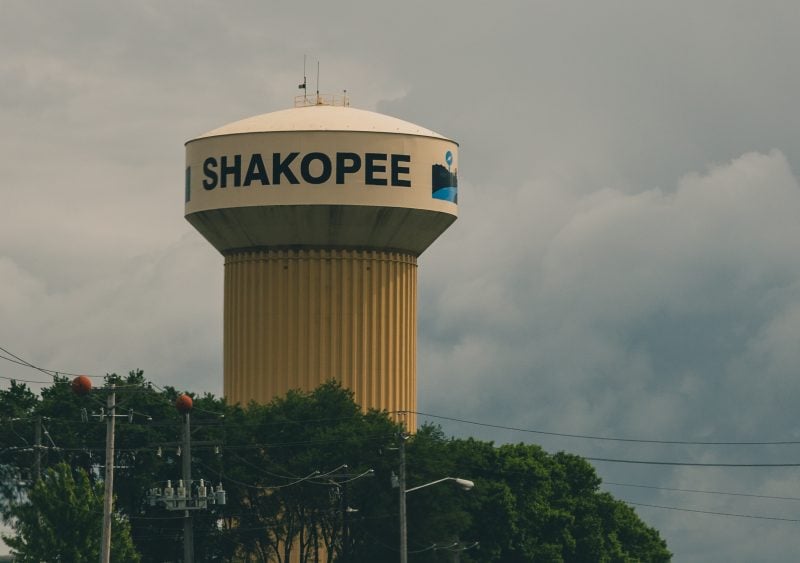
Shakopee ranks as a top suburban destination in Scott County with approximately 41,000 residents. The city earned recognition as #30 on Money magazine’s Best Places to Live list for its strong economy and affordable housing options.
The community offers diverse neighborhoods to suit different lifestyles. Downtown Shakopee features historic charm with mixed housing developments. Southbridge provides newer construction with community parks and family amenities.
Eagle Creek attracts residents seeking upscale living near golf courses. Jackson Heights appeals to families with quality schools and recreational facilities. Sarazin Flats offers modern homes close to the Minnesota River.
Shakopee’s tourism-based economy creates job opportunities in retail, restaurants, and hospitality. The city maintains low crime rates and strong educational systems.
Entertainment options abound despite the city’s modest size. Residents enjoy access to attractions that draw visitors from across the Midwest while maintaining a small-town atmosphere.
23. Cottage Grove
Cottage Grove ranks among Minnesota’s top suburban communities in Washington County. The city serves approximately 37,000 to 40,000 residents with a family-friendly atmosphere.
Home values exceed the state average of $269,934. The typical household earns $102,600 annually, significantly higher than the national median of $67,500.
The poverty rate stands at just 2.7%, which is 81% lower than the national average. Most residents own their homes in this sparse suburban setting.
Cottage Grove offers abundant parks and recreational opportunities. Cottage Grove Ravine Regional Park provides outdoor activities for residents.
Shopping options include the Marketplace at Town Center. The community combines small-town charm with convenient access to Twin Cities amenities.
Young professionals, families, and retirees find the area appealing. The location provides easy access to St. Paul while maintaining a quieter suburban lifestyle.
22. Eagan
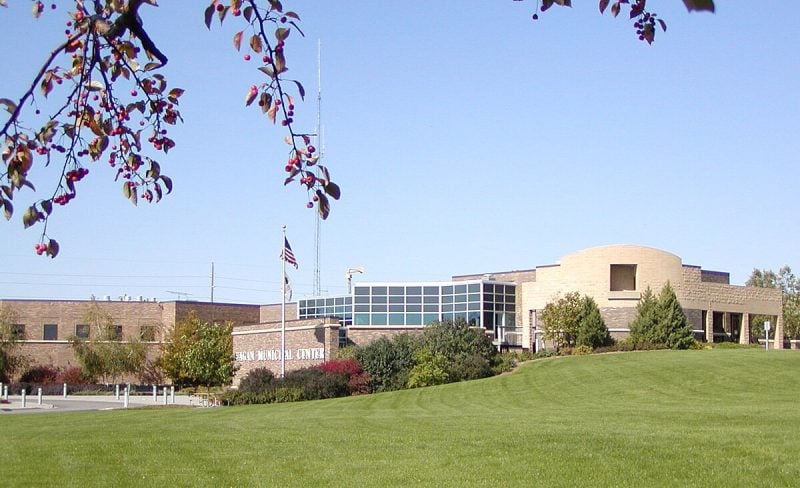
Eagan stands out as one of Minnesota’s premier suburban communities with a population of 68,158. The city offers residents an urban-suburban mix that appeals to families and professionals alike.
The community boasts top-rated public schools and maintains low crime rates. Most residents own their homes, creating stable neighborhoods throughout the area.
Eagan’s strategic location provides easy access to both Minneapolis and St. Paul. Major highways connect residents quickly to the entire Twin Cities metro area.
The city serves as headquarters for several major corporations, creating strong local job opportunities. Lebanon Hills Regional Park anchors an excellent park system that residents enjoy year-round.
Dining and shopping options abound, including the popular Twin Cities Premium Outlets. The community features numerous restaurants, coffee shops, and recreational facilities that enhance daily life for residents.
21. Rochester
Rochester stands out as one of Minnesota’s most livable cities. The city earned recognition as the 27th best place to live in the United States by Livability in 2025.
Home to the world-renowned Mayo Clinic, Rochester has earned the nickname “Med City.” The medical facility ranks as the number one hospital globally according to Newsweek for seven consecutive years.
The city offers strong neighborhoods for residents. Downtown, Lowertown, and Kutzky Park provide established housing options with amenities like personal garages and recreation facilities.
Rochester’s 116,000 residents benefit from excellent healthcare access and educational opportunities. The University of Minnesota-Rochester adds to the city’s academic appeal.
Parks and trails throughout the area provide outdoor recreation opportunities. The city combines medical excellence with quality amenities that attract both families and retirees.
20. Blaine
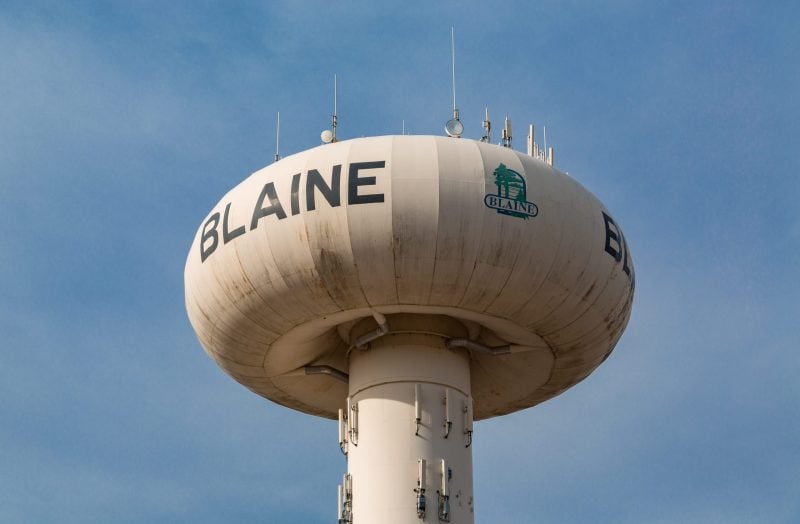
Blaine stands as one of Minnesota’s most livable communities with an overall score of 8.2 out of 10. This suburb in Anoka County serves 60,076 residents and ranks as one of the largest communities in the Twin Cities metropolitan area.
The city offers excellent recreational opportunities through its extensive park system. Residents enjoy easy access to natural areas and outdoor activities throughout the year.
Housing quality varies significantly across different neighborhoods within Blaine. The best areas are typically determined by market demand and median home values.
Blaine’s location provides convenient access to both Minneapolis and Saint Paul. The community continues experiencing steady population growth as more families discover its benefits.
Crime rates remain relatively low compared to other metropolitan areas. The city combines suburban amenities with proximity to urban centers, making it attractive for families and professionals seeking balanced living options.
19. Savage
Savage offers residents a suburban lifestyle with convenient access to Twin Cities amenities. The city maintains a population of approximately 31,758 people in the southern Minneapolis metro area.
The median household income reaches $116,895, significantly higher than the national average of $67,500. This economic strength contributes to the community’s overall stability and quality of life.
Savage’s poverty rate stands at 5.7%, which is 59% lower than the national average. This low poverty rate reflects the city’s economic health and prosperity.
The city provides residents with numerous parks, walking paths, and recreational opportunities. Its location along major highways offers easy commuting options to Minneapolis and surrounding areas.
Savage combines suburban comfort with practical amenities, making it an attractive option for families and professionals seeking a balance between urban accessibility and residential tranquility.
18. Coon Rapids
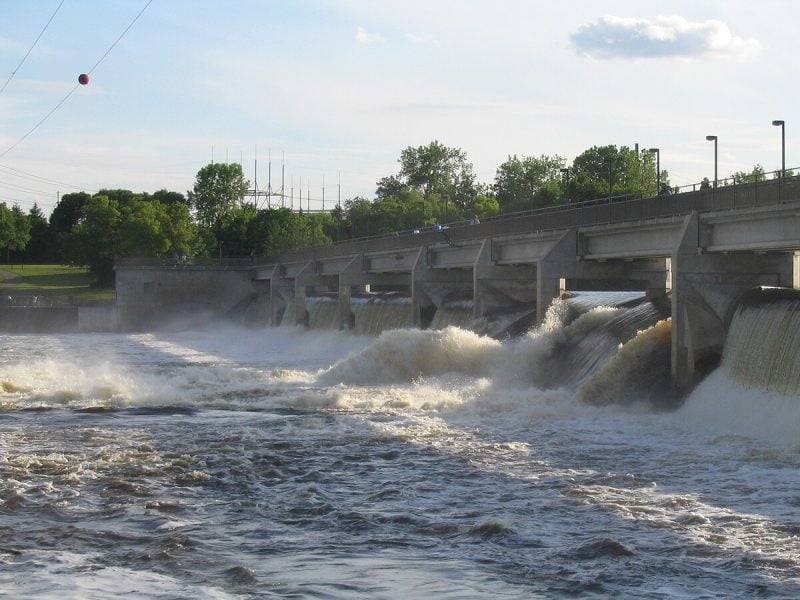
Coon Rapids sits in Anoka County with a population of approximately 61,477 residents. The city ranks 13th among the best places to live in Minnesota according to recent rankings.
The community stands out for its educational excellence. Coon Rapids ranks 18th nationally for high school performance with an impressive 93.7% graduation rate.
Housing costs remain affordable compared to state averages. Home prices in Coon Rapids are less expensive than Minnesota’s average of $269,934, making homeownership more accessible.
The city receives high marks for education, housing, and cost of living from ranking organizations. These factors combine to create an attractive option for families and professionals seeking quality living at reasonable prices.
Coon Rapids offers suburban comfort with convenient access to the Twin Cities metropolitan area.
17. Mankato
Mankato sits in south-central Minnesota with a population of approximately 42,685 residents. The city functions as a retail and entertainment hub while maintaining small-town charm.
The downtown City Center features a blend of historic buildings and modern apartments. Tourtellotte Park offers quiet residential streets with well-maintained homes.
Hilltop attracts families with good schools and nearby parks. North Mankato provides affordable housing options with a smaller community feel.
Eagle Lake delivers lakeside living with recreational opportunities. The area includes many parks, walking paths, and outdoor spaces.
The typical household earns $52,411 annually, which falls below the national median. The poverty rate stands at 22.5%, higher than national averages.
Mankato’s economy relies on manufacturing, technology, and health sciences sectors. The metropolitan area contains historical sites and diverse recreational areas that support local tourism and quality of life.
16. Burnsville
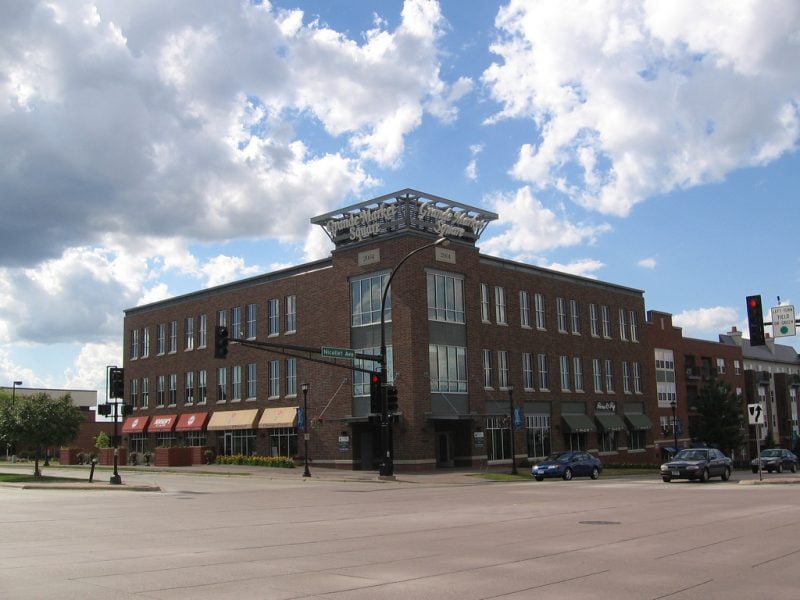
Burnsville ranks as one of the best places to live in Minnesota, earning recognition for its diverse community and quality of life. The city holds the 10th position among most diverse suburbs in the state.
Located in Dakota County, Burnsville offers residents an urban-suburban mix with a population of approximately 64,000. Most residents own their homes in this thriving community.
The city features several desirable neighborhoods. Crystal Lake Area provides lakeside homes and recreational opportunities. River Hills offers newer housing near the Minnesota River.
Burnsville’s median household income of $76,017 exceeds the national average. The poverty rate stands at 7.2%, significantly below national levels.
Residents enjoy abundant outdoor activities at Alimagnet Park and Buck Hill. The Minnesota Valley National Wildlife Refuge provides additional recreational opportunities.
The community offers numerous coffee shops and parks throughout the city. Burnsville’s location provides convenient access to Minneapolis while maintaining its suburban character.
15. Roseville
Roseville stands out as one of Minnesota’s premier suburban communities with a population of approximately 36,000 residents. The city sits strategically in Ramsey County, just 10 minutes north of both Minneapolis and Saint Paul.
This prime location offers residents easy access to Twin Cities amenities while maintaining a quieter suburban atmosphere. Roseville provides an urban-suburban mix that appeals to diverse lifestyles.
The community boasts strong economic indicators with a median household income of $74,571, exceeding the national average. The poverty rate remains low at 7.6%, significantly below national levels.
Most residents own their homes in neighborhoods that vary considerably in quality and value. The city offers numerous restaurants, coffee shops, and parks for recreational activities.
Roseville provides convenient access to Como Regional Park and employment opportunities at the University of Minnesota-Twin Cities. The AMC Rosedale 14 entertainment complex serves local residents.
14. Minnetonka (Not Lake)

Minnetonka stands out as one of Minnesota’s premier suburban communities. This western suburb of Minneapolis consistently ranks among the top places to live in the state.
The city offers residents exceptional public schools. Minnetonka ranks 11th out of 368 places for best public schools in Minnesota.
Natural amenities define much of Minnetonka’s appeal. The community provides abundant parks, lakes, and recreational opportunities that enhance quality of life.
Housing values reflect the area’s desirability. Different neighborhoods within Minnetonka vary significantly in price and character, offering options for various budgets.
The location provides convenient access to Minneapolis while maintaining a suburban atmosphere. Residents benefit from city amenities without sacrificing the peaceful environment that defines Minnetonka.
Crime rates remain low compared to urban areas. This contributes to the community’s reputation as a safe place to raise families and establish roots.
13. Apple Valley
Apple Valley ranks as a top suburb in the Twin Cities metro area. The city offers residents a high quality of life with excellent public and private schools.
Home prices in Apple Valley exceed the Minnesota state average of $269,934. The higher cost reflects strong demand for this desirable location.
Several neighborhoods stand out for their appeal. Redwood Pond provides quiet streets with well-maintained homes near parks. Palomino Hills features upscale properties with larger homes and scenic views.
Cedar Knolls attracts families with good schools and community events. Greenleaf offers newer development options with modern home designs.
Apple Valley previously ranked 17th on CNN/Money’s Best Places to Live list. The city maintains low crime rates and provides numerous recreational amenities for residents.
12. Edina
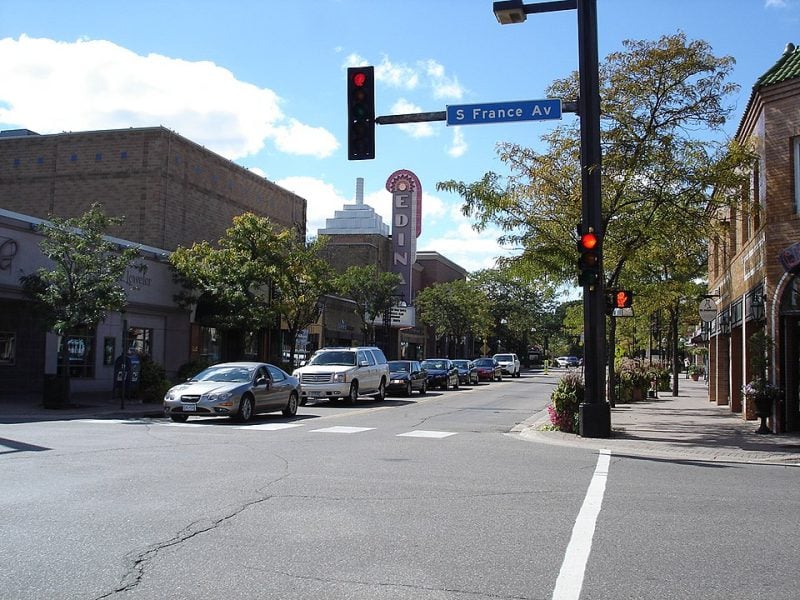
Edina stands as one of Minnesota’s most desirable suburban communities. This affluent Minneapolis suburb in Hennepin County consistently ranks among the top places to live in the state.
The city offers residents an urban feel while maintaining suburban charm. Most residents own their homes in this community of approximately 53,000 people.
Edina’s excellent public schools draw many families to the area. The strong local economy and high quality of life contribute to its appeal.
The Morningside neighborhood provides a small-town atmosphere near shopping and dining. The Country Club District features luxury properties and the Edina Country Club.
Parkwood Knolls offers spacious lots close to Centennial Lakes Park. The 50th & France district creates a vibrant commercial hub with boutique shops and restaurants.
Residents enjoy numerous dining options, coffee shops, and parks throughout the city.
11. Bloomington
Bloomington sits in the Twin Cities metro area with a population of 88,838 residents. The city offers an urban suburban mix that attracts young families and professionals.
Most residents own their homes in this Hennepin County community. The area features numerous restaurants, coffee shops, and parks for daily activities.
Bloomington’s location provides access to top-notch schools and a robust economy. Residents enjoy plenty of outdoor recreational opportunities throughout the year.
The city made national recognition by cracking the top 25 in Livability’s 2024 Best Places to Live list. This ranking considered cities with populations between 75,000 and 500,000.
Neighborhood quality varies significantly across Bloomington based on home values and local amenities. The housing market reflects strong demand in the most desirable areas.
10. Maple Grove
Maple Grove stands as one of Minnesota’s premier suburban communities. This northwestern Minneapolis suburb offers residents an excellent quality of life with modern amenities and strong community appeal.
The city ranks 24th among Minnesota’s best suburbs to live in for 2025. Home prices exceed the state average of $269,934, reflecting the area’s desirability and market demand.
Maple Grove serves a population of 70,539 residents in Hennepin County. Most residents own their homes and enjoy a sparse suburban atmosphere with abundant green spaces.
The community features low crime rates and highly-rated schools. These factors make it particularly attractive for families raising children.
The city provides numerous parks and recreational opportunities. Residents benefit from excellent municipal services and well-maintained infrastructure throughout the community.
9. Woodbury
Woodbury ranks as one of Minnesota’s premier suburbs with a population of 76,945. The city consistently earns recognition on national best places to live lists.
U.S. News and World Report ranked Woodbury 54th nationally and fourth in Minnesota for 2025-2026. Fortune magazine placed it 12th among the 50 best places to live for families in the United States.
The community offers excellent public schools and maintains over 3,000 acres of parks and recreational facilities. Residents enjoy easy access to both Minneapolis and St. Paul while living in a well-planned suburban environment.
Woodbury features strong retail centers including Woodbury Lakes and Tamarack Village. The city has a high median household income and robust economy that supports its quality of life.
Most residents own their homes in this Washington County suburb. The area provides a dense suburban feel with numerous green spaces and outdoor recreation opportunities.
8. Plymouth
Plymouth consistently ranks among Minnesota’s top places to live. U.S. News ranked it 17th nationally and first in Minnesota for 2025-2026.
The city sits in Hennepin County within the Twin Cities metropolitan area. It offers low crime rates and high education scores.
Plymouth Creek features upscale homes with larger lots. The Wayzata School District serves parts of the city and maintains an excellent reputation.
Medicine Lake provides lakefront living opportunities. Residents enjoy access to recreational activities and water amenities.
Home prices in Plymouth exceed Minnesota’s state average of $269,934. The higher costs reflect the city’s desirable amenities and location.
Plymouth has experienced steady population growth in recent years. The city earned an 8 out of 10 livability rating from BestPlaces.net.
7. Eden Prairie
Eden Prairie consistently ranks as one of Minnesota’s premier places to live. This Hennepin County city has earned recognition from multiple ranking systems for its exceptional quality of life.
The city offers residents an urban-suburban mix with a population of 63,249. Most residents own their homes in this family-friendly community.
Eden Prairie features several distinguished neighborhoods. Bearpath is an upscale gated community with luxury homes and a private golf course. Bent Creek provides family-oriented living with well-maintained parks and trails.
Prairie View offers diverse housing options with convenient access to shopping and dining. Homestead is known for spacious lots and proximity to schools and recreational facilities.
The city boasts numerous coffee shops and parks throughout its neighborhoods. Top-rated schools and lush green spaces contribute to Eden Prairie’s appeal for families and professionals alike.
Home prices exceed Minnesota’s state average, reflecting the area’s desirability and market demand.
6. Northfield
Northfield ranks as one of Minnesota’s most desirable communities, earning recognition from Money Magazine as a top 50 place to live in America. The city combines affordability with quality of life in a way that attracts families and professionals alike.
Located 45 minutes south of the Twin Cities, Northfield offers residents easy access to metropolitan amenities while maintaining small-town charm. The population of approximately 20,000 creates a close-knit community atmosphere.
The city ranks 32nd out of 480 Minnesota communities for both best places to live and best places to raise a family. Housing remains affordable compared to metro areas, though neighborhood quality varies significantly across the city.
Northfield’s economy thrives alongside its commitment to diversity and exceptional quality of life standards.
5. St. Michael
St. Michael offers residents a blend of suburban comfort and natural recreation opportunities. The city sits in Wright County and provides access to outdoor attractions like the Quaking Bog Nature Area.
Families appreciate the Riley-Lund Trail Aquatic Center for swimming and recreation. The community benefits from proximity to shopping destinations such as Elm Creek Commons Mall.
Home prices in St. Michael exceed Minnesota’s state average of $269,934. This reflects strong market demand and desirable neighborhood characteristics.
The St. Michael-Albertville High School serves the educational needs of local families. The school district contributes to the area’s appeal for residents with children.
Location advantages include reasonable access to Twin Cities amenities while maintaining a smaller community atmosphere. Residents enjoy walking paths and parks throughout the area.
4. Lakeville
Lakeville ranks among Minnesota’s top suburban communities, located in Dakota County just south of Minneapolis-St. Paul. The city maintains a population of approximately 72,000 residents.
This suburb offers convenient access to Twin Cities amenities via Highway 35W. Residents enjoy a sparse suburban atmosphere where most people own their homes.
The community features numerous parks, walking paths, and recreational areas. Lake Marion provides scenic beauty and outdoor activities for families.
Lakeville receives high livability scores, ranking within the top 20 places to live in Minnesota. The area combines urban conveniences with natural landscapes.
Housing options vary significantly across different neighborhoods within the city. The community attracts residents seeking quality schools and safe environments.
Job opportunities and economic stability contribute to Lakeville’s appeal. Dakota County’s location provides access to employment centers throughout the metropolitan area.
3. Chanhassen
Chanhassen earned recognition as the top place to live in the United States according to Money Magazine’s annual ranking. This suburban community of approximately 26,000 residents sits southwest of Minneapolis.
The city ranks third among Minnesota’s best places to live based on multiple quality-of-life factors. These include amenities, education quality, employment opportunities, and low crime rates.
Chanhassen residents enjoy a median household income of $124,184, significantly above the national average of $67,500. The poverty rate stands at just 2.9%, which is 79% lower than the national figure.
Housing costs exceed Minnesota’s state average of $269,934, reflecting the area’s desirability and strong local market demand. The higher prices correspond with the community’s excellent schools and comprehensive amenities.
2. St. Paul
St. Paul stands as one of Minnesota’s premier destinations for residents seeking a blend of historic charm and modern amenities. The city serves as half of the renowned Twin Cities metropolitan area alongside Minneapolis.
The capital city offers top-tier healthcare facilities and a thriving economy that attracts professionals and families alike. Residents enjoy access to numerous cultural attractions throughout the year.
St. Paul’s neighborhoods consistently rank among Minnesota’s best places to live. The city features picturesque parks and green spaces that enhance quality of life for residents.
Housing costs in St. Paul align with Minnesota’s state average of approximately $269,934. The real estate market reflects strong demand across various neighborhoods.
The city’s historic character sets it apart from other metropolitan areas in the state. St. Paul combines traditional architecture with contemporary infrastructure and services.
1. Minneapolis
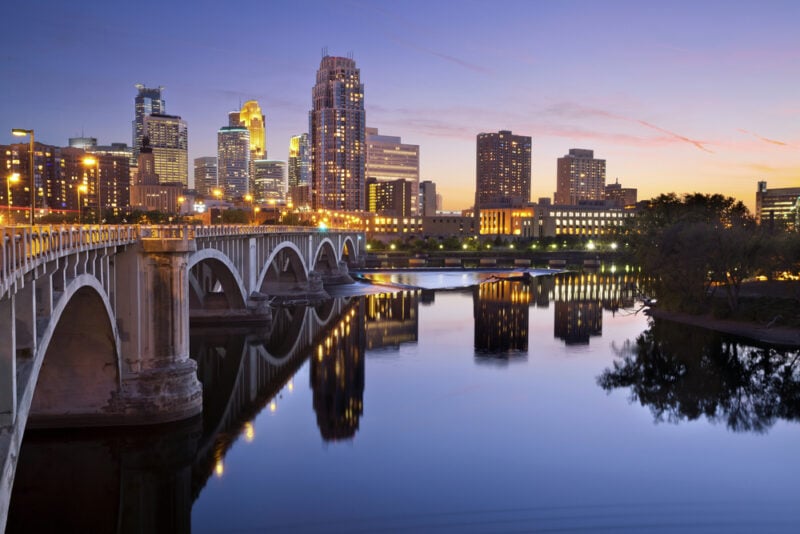
Minneapolis stands as Minnesota’s largest city and cultural hub. The city offers a vibrant urban lifestyle with diverse neighborhoods and strong employment opportunities.
The downtown area features professional sports teams, including the Twins, Vikings, and Timberwolves. A thriving nightlife scene includes numerous bars, restaurants, and live music venues.
Residents enjoy extensive park systems and outdoor recreation opportunities. The city provides easy access to lakes and biking trails throughout the metropolitan area.
Minneapolis maintains a strong job market across multiple industries. The cost of living remains reasonable compared to other major metropolitan areas.
The city’s food scene rivals coastal cities in quality and diversity. Public transportation connects residents to surrounding suburbs and St. Paul.
Housing options range from downtown lofts to single-family homes in established neighborhoods. The education system includes both public schools and higher education institutions.
Factors That Make a Minnesota City Desirable
Minnesota’s top cities combine strong economic foundations with excellent schools and abundant outdoor recreation opportunities. Quality healthcare systems, low crime rates, and reasonable housing costs create the foundation for desirable communities.
Quality of Life Metrics
Housing affordability remains a primary concern for residents choosing where to live. The median household income in top Minnesota cities like Eden Prairie reaches approximately $97,000, supporting higher property values while maintaining accessibility.
Crime rates significantly impact livability rankings across the state. Communities with lower violent and property crime statistics consistently rank higher in desirability studies.
Healthcare access plays a crucial role in quality of life assessments. Cities near major medical centers or with comprehensive local healthcare facilities attract families and retirees.
Cost of living extends beyond housing to include utilities, transportation, and everyday expenses. Minnesota cities offer varying price points, with suburban areas typically commanding premium costs compared to rural locations.
Community amenities such as parks, libraries, cultural venues, and shopping centers enhance daily life. Access to restaurants, entertainment, and local services creates vibrant neighborhoods that residents value.
Employment and Economic Opportunities
Job market diversity strengthens local economies and provides career advancement opportunities. Minnesota’s economy spans healthcare, technology, manufacturing, agriculture, and financial services sectors.
Major employers anchor regional job markets. The Twin Cities metropolitan area hosts Fortune 500 companies, while smaller cities often rely on healthcare systems, educational institutions, or manufacturing facilities.
Unemployment rates below state and national averages indicate healthy local economies. Cities with stable employment typically experience population growth and improved housing markets.
Average salaries vary significantly across different regions and industries. Technology and healthcare professionals often command higher wages in urban areas, while rural communities may offer lower salaries with reduced living costs.
Business development opportunities attract entrepreneurs and small business owners. Cities with supportive business climates, reasonable commercial real estate costs, and streamlined permitting processes encourage economic growth.
Access to Outdoor Recreation
Minnesota’s lake access defines recreational opportunities in many communities. Cities near popular lakes offer boating, fishing, swimming, and waterfront activities that enhance quality of life.
State parks and nature preserves provide hiking, camping, and wildlife viewing opportunities. Communities located near these protected areas benefit from preserved natural spaces and tourism revenue.
Winter recreation facilities support Minnesota’s long winter season. Cities with maintained cross-country ski trails, ice skating rinks, and snow removal programs help residents embrace cold weather months.
Bike trails and walking paths promote active lifestyles and alternative transportation options. The state’s extensive trail networks connect communities and provide safe recreation corridors.
Golf courses, beaches, and recreational facilities add recreational value to communities. These amenities attract residents and contribute to local property values.
Educational Resources
Public school ratings heavily influence family relocation decisions. Districts with high test scores, graduation rates, and college preparation programs attract families with school-age children.
Higher education institutions provide educational opportunities and economic benefits to their host communities. Universities and community colleges bring students, faculty, and research dollars to local economies.
Educational funding levels impact school quality and available programs. Minnesota’s education funding formula creates variations between districts, affecting resources and outcomes.
Special programs such as STEM initiatives, arts education, and advanced placement courses distinguish top school districts. These offerings prepare students for competitive college admissions and future careers.
Adult education opportunities through community colleges, vocational schools, and continuing education programs support workforce development and career advancement throughout residents’ lives.
Cost of Living and Housing Trends
Minnesota ranks 23rd in national cost of living analysis with a score of 95.1%, making it slightly more affordable than the national average. Housing costs remain 14% below national averages, though rising prices create competitive market conditions across major metropolitan areas.
Affordability Comparisons Across Regions
Twin Cities Metropolitan Area represents the state’s most expensive housing market. Minneapolis and St. Paul command higher prices due to employment opportunities and urban amenities.
Eden Prairie maintains median household incomes around $97,000, reflecting affluent suburban pricing. Housing costs increase significantly within 30 minutes of downtown Minneapolis.
Greater Minnesota offers substantially lower housing expenses. Marshall and Hibbing provide affordable alternatives with reduced living costs compared to metropolitan areas.
Rochester’s healthcare sector drives moderate pricing between Twin Cities rates and outstate affordability. Duluth benefits from Lake Superior location while maintaining reasonable housing costs.
Rural communities typically offer the lowest housing expenses statewide. Small towns provide budget-friendly options for families prioritizing affordability over urban conveniences.
Homeownership Rates
Minnesota maintains strong homeownership traditions across diverse communities. Suburban areas like Eden Prairie attract families seeking single-family homes with yard space.
First-time buyers face challenges in competitive Twin Cities markets. Rising prices require higher down payments and stronger credit qualifications than previous years.
Rural regions support higher homeownership percentages due to lower entry costs. Smaller communities offer accessible pricing for young families and retirees.
Investment opportunities vary significantly by location. Twin Cities properties appreciate faster but require larger initial investments compared to outstate markets.
Rental Market Overview
Minneapolis rental market shows tight inventory with increasing monthly rates. Young professionals compete for apartments near employment centers and entertainment districts.
St. Paul offers slightly lower rental costs than Minneapolis while maintaining urban amenities. University areas experience seasonal fluctuations tied to academic calendars.
Suburban rentals provide family-friendly options with higher square footage per dollar. Communities outside immediate metro areas offer parking and outdoor space advantages.
Rochester’s medical employment drives steady rental demand. Healthcare workers create consistent tenant pools for apartment complexes and single-family rentals.
